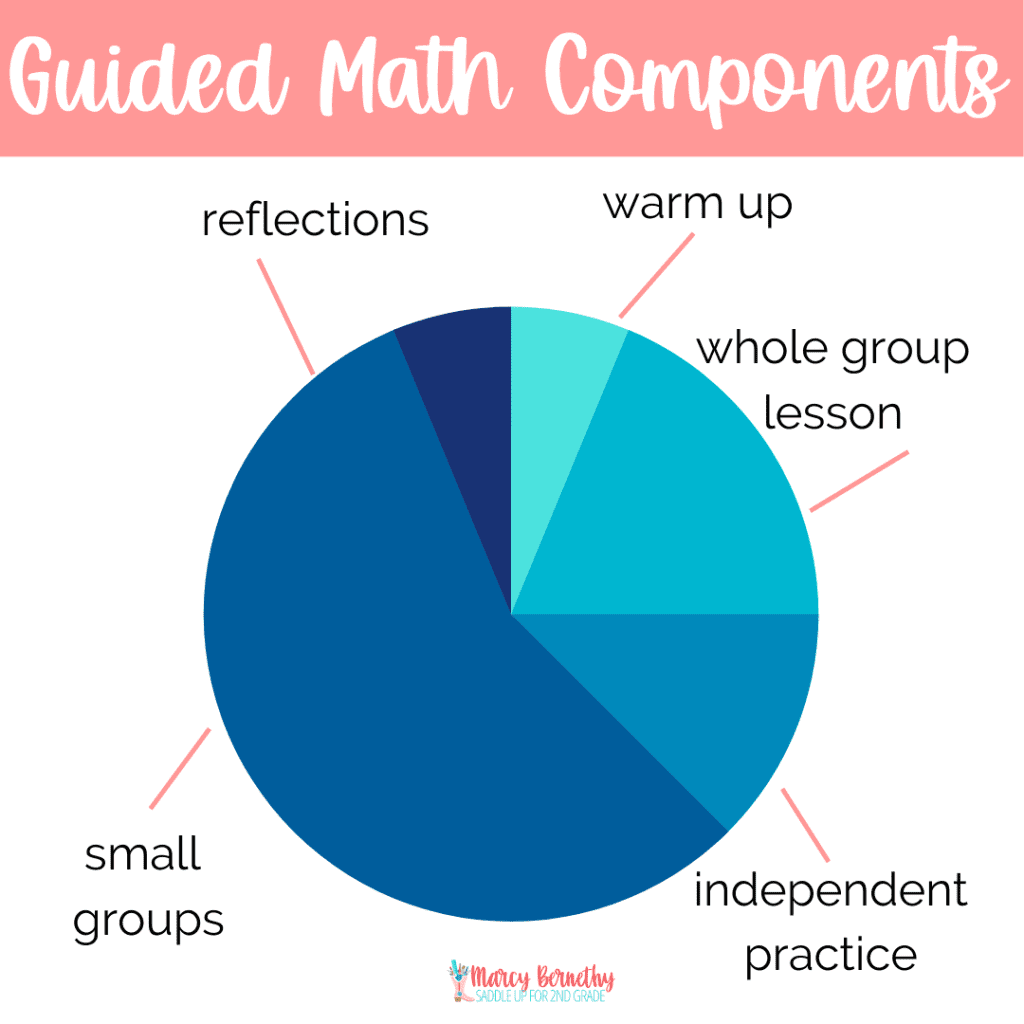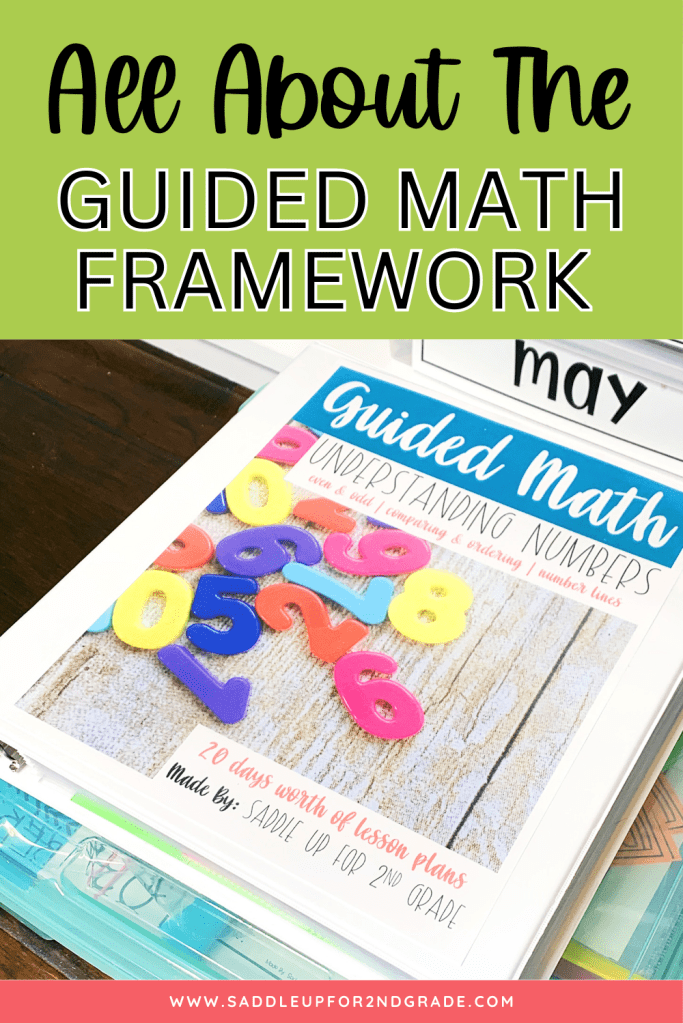

Join me for a FREE, Guided Math workshop to discover how to easily incorporate Guided Math into your current schedule!
Guided math is a framework for your math block that allows teachers to differentiate instruction to meet the needs of all students. Similar to guided reading, with this structure of teaching, students are taught the curriculum standards in small groups based on their ability level. As educators, it’s our job to help all of our students succeed by providing targeted instruction through small group instruction. Read on to learn what the guided math framework is all about and the different components of it.

Guided math is a framework for instruction that focuses on a gradual release method from teacher-led instruction to student-led instruction. There are five main components of the guided math framework.
These 5 components are:

Below is a chart that shows the gradual release method within this guided math framework.

Math warms ups are short, simple tasks that your students can complete in about 5-10 minutes at the start of your math block. Warm ups can be simple games or pencil and paper tasks.
These math warm up tasks need to be on a level that students can complete independently. Most often, it is a quick review of something they’ve already learned. Math warms up are also a great time to promote higher order thinking.
Math warm ups are not random worksheets that you use to keep your students busy. Warms ups are designed to help increase mathematical comprehension. Math warm ups are never graded or turned in.
If your math block happens to be in the morning, math warm ups can take the place of traditional morning work. When students arrive in your classroom in the morning, they need to know exactly what is expected of them.
These routines need to be consistent so that time is not wasted. If your math block is not first thing in the morning, your warm up time can be the first few minutes of your math block to get students back into the routine of mathematical thinking. Math warm ups set the tone for your entire math block.
Think of your whole group mini-lesson as the kick-off to your instruction each day! This is a great opportunity to hook your students and develop interest in a new topic. Mini-lessons are perfect for introducing new concepts and allowing time for continued practice. Typically, a whole group mini-lesson lasts 15-20 minutes.
During your whole group mini-lesson, there are a few key things you can do, such as:
When planning out your mini-lessons, keep them simple and don’t over-plan. You don’t need to make an anchor chart, work with manipulatives, have students work in their math journals, and do a craft all in the same timeframe or the same day.
A few things that you can do during this time to keep your students engaged are:
Set a timer and keep your whole group instruction simple.
In the guided math framework, independent practice is when students take 10-15 minutes to apply what they have just learned in their whole group mini-lesson. During this time, the teacher walks around and assists those who may need support and checks for understanding.
During your independent practice time, students can do a variety of activities, such as:
Your small group instruction is where you are going to get the most bang for your buck. I am a firm believer that miracles happen at the small group table.
This is when the teacher will provide targeted, differentiated instruction to small groups of students. While the teacher is working with a group of students, the rest of the class is rotating through independent activities that cover previously taught skills. Small group rotations typically last 15-20 minutes per rotation.
A small group lesson should always focus on a small portion of a bigger topic. During this time, your goal is to help your students make mathematical connections, demonstrate and model concepts, and provide support.
Math centers are different than any other component in the guided math framework. The responsibility of learning shifts from the teacher to the students. During math centers, students review previously taught concepts using a variety of hands-on activities.
Your students have the flexibility to work individually, with a partner, or with the entire group. Math centers are very flexible as well. Students might be working on a paper and pencil task, playing a game, working in their math journal, problem solving, or working with some sort of technology.
The last component of the guided math framework is reflection time. Reflections hold students accountable for how they are feeling about their learning. This also gives the teacher key insights into how students are progressing with a certain skill.
A few key reflection questions are:
Students can respond to these types of questions orally or in writing. This is not something that comes naturally to most kids, but with time, they’ll develop reflection skills, which becomes a very valuable piece of your math block.
I know that may seem like a lot of information to process, but I promise you that implementing guided math doesn’t have to be hard.
I’ve created a FREE eBook that goes into detail about how to get started with guided math in your classroom. Inside this download, you’ll learn how to create a vision for your classroom, see example activities, and so much more. Fill out the form below to have it sent straight to your inbox.
If you are looking for more information on how to make time for guided math, check out my FREE Making Time For Guided Math Training, where you can learn how to create your very own guided math schedule while receiving one hour of professional development credit.
For more information on guided math, check out my Guided Math in the Primary Classroom blog series and these guided math resources below.
Do you have more questions? Join the Saddle Up for 2nd Grade Teachers Facebook Community and drop me a question. I’m always happy to help!

Math should be fun, not stressful. Ditch the timed math fact tests and replace them with math games that will help your students learn and retain information more effectively.
© Saddle Up for 2nd Grade • Website by KristenDoyle.co


